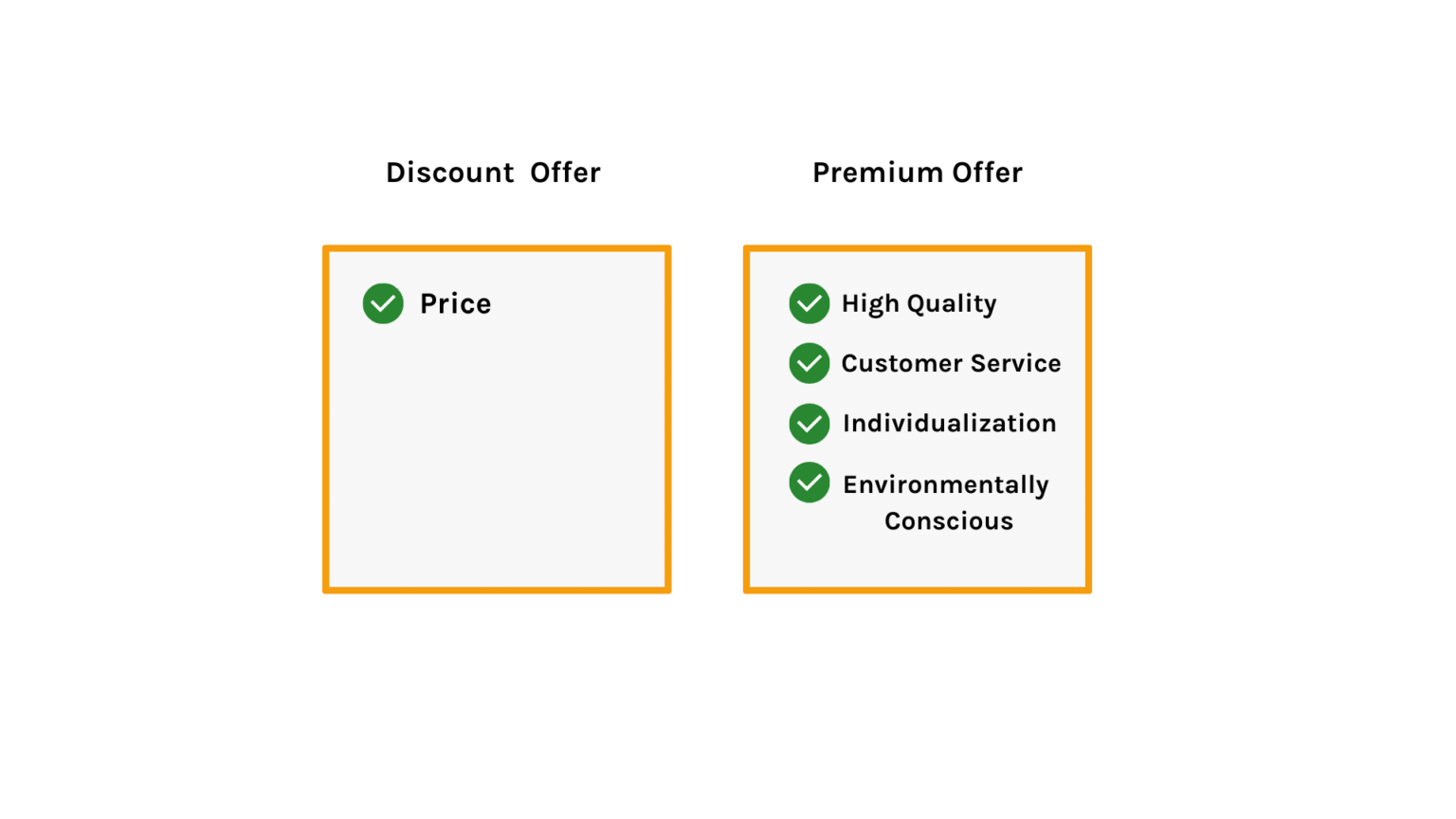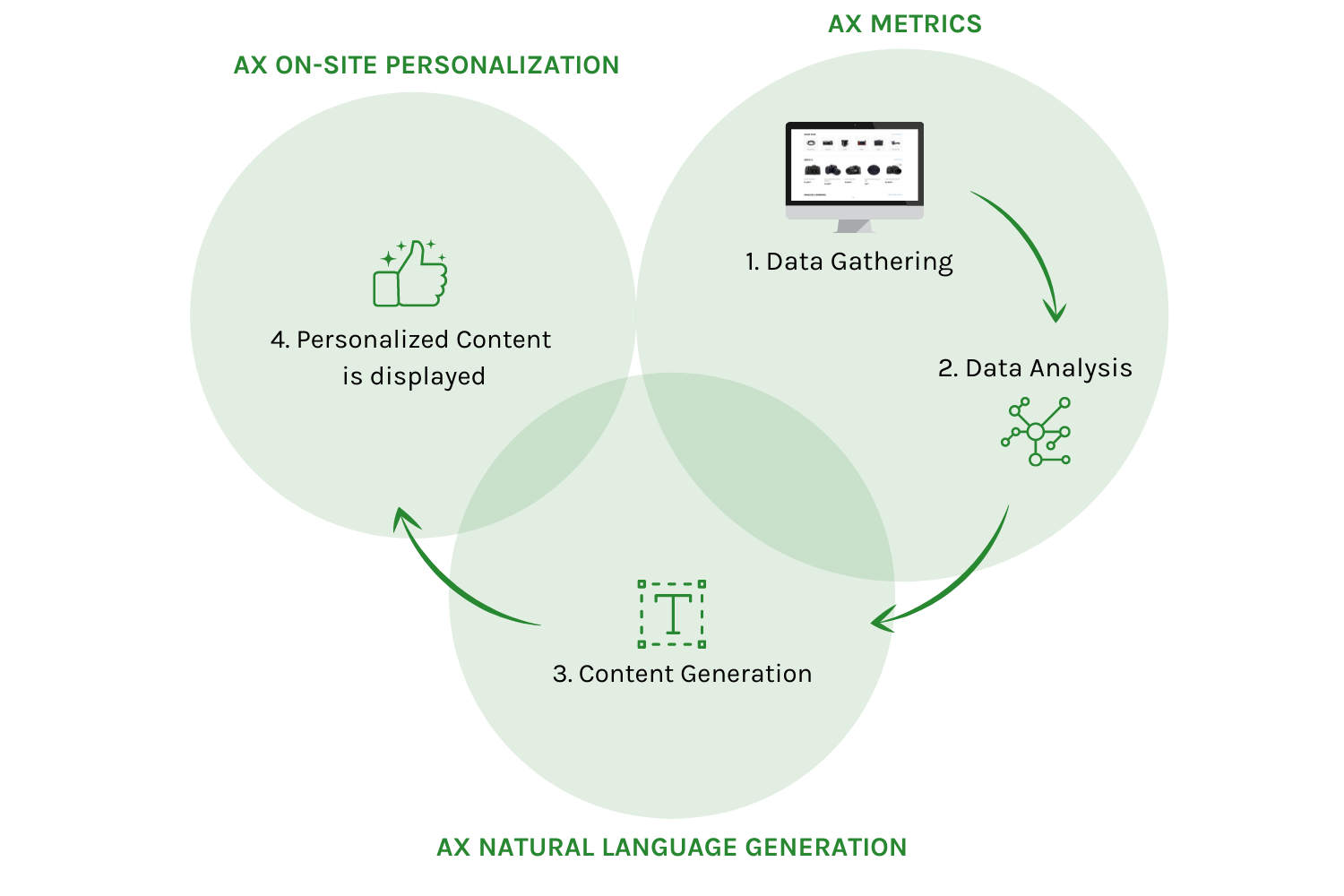Product pages today are composed of generic lists of product features and boilerplate explanation at worst and at best generic lists of features and a different boilerplate explanation based upon the viewer’s marketing segment.
This approach doesn’t focus on driving conversions, doesn’t explain why products are better suited for the customer or why the customer should buy them from you instead of searching the product on google and buying it on the cheapest site or brand available.
For all of their “digital” and “data”, conventional product pages are no better than a catalogue page.
In this article we provide the following information:
Conventional eCommerce conversation rate optimization tools optimize design elements with A/B Tests. For example, if the button is blue in the lower right-hand corner, does that get more clicks than a red button in the upper right? Out of three boilerplate descriptions you wrote, which one gets a few more sales? While these design questions are interesting, design tweaks can only take you so far.
Some software companies state they do personalization. What they mean by personalization is simply inserting the customers name or “other buyers like you like this product” plugins. Based on a survey done by AX Semantics in January 2021, 68% of Retail CEO’s who’ve tried A/B testing tools aren’t happy with the results. And it makes sense, A/B testing tools market themselves as tools to “supercharge conversion rates”. The reality doesn’t live up to the marketing. A/B Testing tools fail because they focus on everything except the heart of the product page: the content.
Selling online is tough: eCommerce buyers scour the web looking for the cheapest option and that leaves eCommerce companies with two options: either you try to be the cheapest, or you keep your premium price and explain to each buyer why your costs are higher.

eCommerce companies need to decide if they will compete on price or compete on experience and offer in order to keep their prices higher. How do you explain to a buyer in your store why your products cost more than a similar one on Amazon?
It’s simple, a good salesperson explains why the product is the right fit for the customer taking their situation into account. As a quick example, if you work in a home improvement store, the first time a customer comes in you might explain why the drill he is looking at is the best all around option. If he is looking at a drill with a shopping cart full of masonry bits and bricks, then you would explain which one has the power he or she needs to drill through masonry. And, finally if the same buyer came back multiple times, you’d explain how to justify to his partner the higher price, why it is safer to buy with you (money back guarantee, warranty, ease of contact, etc.) and why the more expensive drill is the best fit for him. So, how do you replicate this in-store experience online so you can keep your premium offer and not go low cost?
New technology - content personalization - gives us the answer and what buyers want is clear. A recent Accenture study found that over 90% of buyers want a personalized experience. eCommerce websites already track and collect data on inbound visitors: where did they come from, what search terms, what else have they looked at on your site, how many times have they visited etc. At the same time, you have a wealth of information on your existing customers: what did they buy last week, is there a pattern to when they buy and what? Do they often leave things in their cart?
Again, let’s think about the in-store experience. If you were working in a store and knew all of this about a customer, how would you change your sales pitch to achieve a purchase? Would you give them a generic pitch, or would you contextualize and personalize the pitch? A good salesperson would clearly personalize and change the pitch to take into account what they knew about the buyer. He would always make recommendations. And now, for the first time, you can do exactly this online and at scale too.
Natural Language Generation (NLG) is AI-powered software that can write in up to 110 different languages using structured data sets. For the first time, this powerful technology which has already conquered the Banking and Pharma sectors, is being focused on ecommerce for automated content generation and to explain website data and revolutionize how online sales work.
Personalized Commerce leverages real-time user data to auto generate product descriptions, category pages and shopping cart incentives that are specifically targeted towards each unique viewer. Each product page becomes a one-to-one proposal taking into account each customer’s motivations and interests. Show the right message to the right person and drive conversion rates, reduce shopping cart abandonment, and increase sales. By only employing local evaluation of 1st party data, customers introduce this without going down the GDPR-issue funnel.

AX Semantics currently works with eCommerce companies globally and has generated millions of pages of eCommerce content to boost conversion rates and create amazing eCommerce experiences.
Do you want to learn more about how personalized commerce can turn product pages into personalized sales proposals? Download the free whitepaper "How to turn Product Pages into Personalized Proposals"!
E-Commerce personalization is crucial because it allows businesses to provide a unique and targeted experience for their customers. Online stores can adjust their products, services, and overall online experience by understanding the customer's needs and preferences. This helps in building customer loyalty and, therefore, increases sales over time. It also helps you grow the average order value.
Personalized product pages individually address customer interests and
generate more conversions. The AX Semantics "Personalized Commerce" uses real-time user data to create individually targeted purchase incentives for each visitor of the website - be it a regular customer or a first-time visitor.
AX Semantics' feature "Personalized Commerce" offers a hyper-
personalized customer approach that increases conversions. As a feature of our tool, it is linked to our automated content generation software. It designs, tests, and optimizes the content of your product pages to best address and convert each individual customer. Learn more and read everything about "Personalized Commerce".
Most eCommerce merchants struggle with personalization because they still don’t use AI-powered personalization tools. Companies that fail to invest in automation programs can’t cope with large datasets manually.
They lack customer analytics and data-driven insights, so they end up providing eCommerce website visitors with generic and impersonal content.